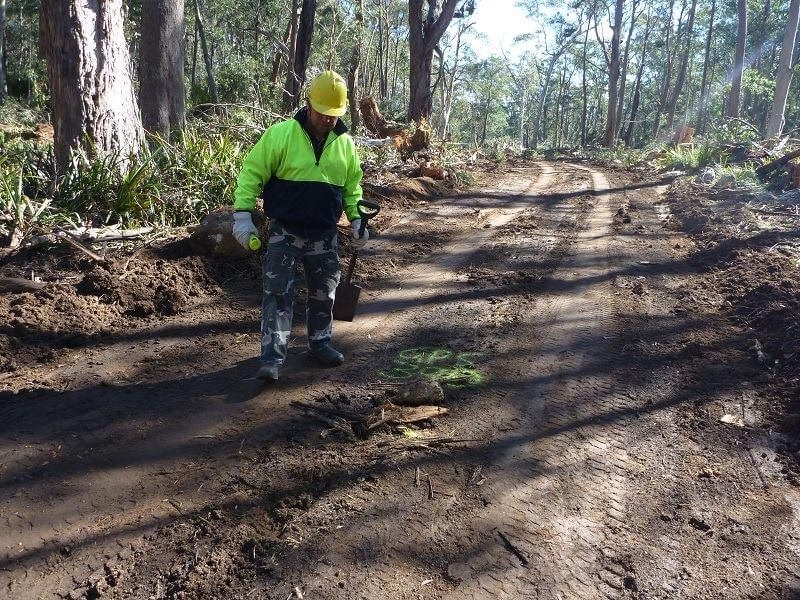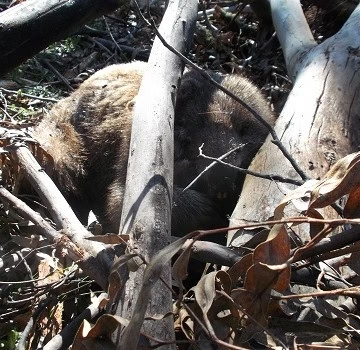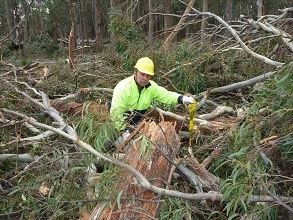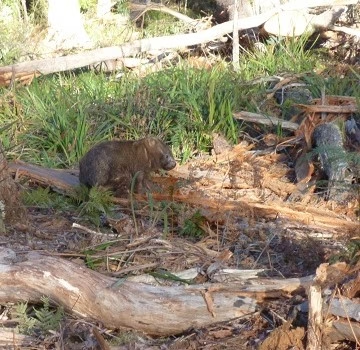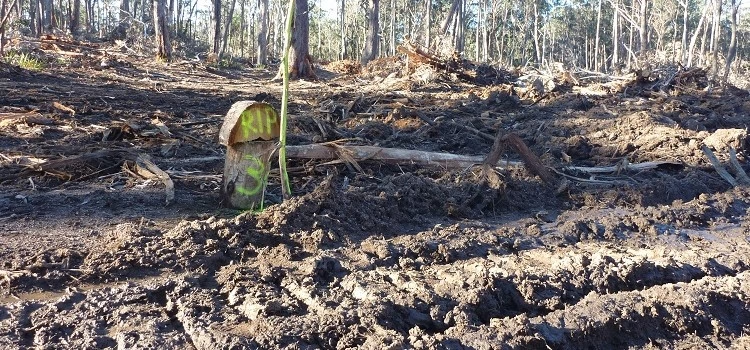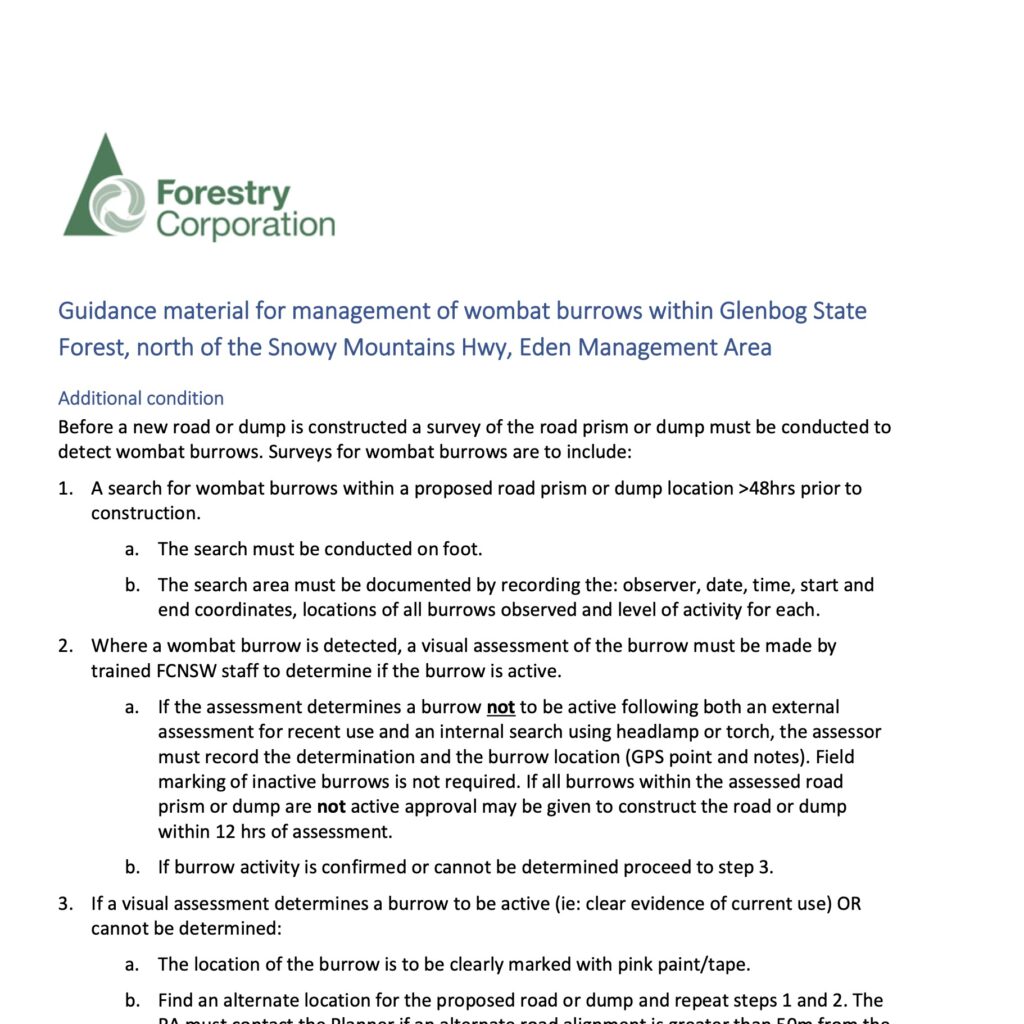Our fight to save wombats and their burrows during logging in the Glenbog State Forest
Before the logging began
“We have a special licence called collateral damage” and “You do know wombats are not a threatened species” and “We don’t have to consider wombats because they are not a threatened species”, were NSW Forestry Corporation’s answers to how they were going to prevent wombats being buried alive during the logging of Glenbog State Forest.
We GPS marked, sprayed fluorescent paint, used survey tape to highlight the location of 150 wombat burrows and provided the locations and information to NSW Forestry Corporation.
We also requested a total exclusion of one section on the Northern boarder due to the fragile endangered Sphagnum bog ecosystem nearby and the large number of old established wombat burrows. Our plight fell on deaf ears and at no time was an exclusion considered.
After contacting EPA (Environment Protection Authority), and numerous letters and phone calls to different Authorities, The Forestry Corporation agreed to protect our GPS marked burrows and included three additional clauses in their harvest plan.
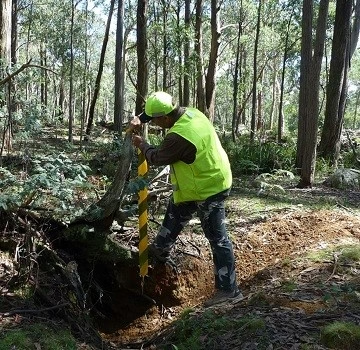
Continue reading about Before Logging
Glenbog State Forest is located in the Southeast of NSW and covers an area of approximately 11,000 Hectares. Logging in the Northern section of Glenbog was scheduled in April 2014. The Glenbog at that time had many endangered and threatened species of both flora and fauna, as well as large numbers of Bare-nosed Wombats. Meeting with the NSW Forestry Corporation’s representative for the first time was astonishing when we asked how they are going to deal with the large number of wombats. Their answer was “We have a special licence called collateral damage” and “You do know wombats are not a threatened species” and “We don’t have to consider wombats as they are not threatened.”
We spent weeks in the proposed logging area to GPS mark all burrows we could find. We sprayed with fluorescent paint and tied yellow survey tape with the GPS coordinate added to each tape marker of a total of 150 wombat burrows. All GPS coordinates were provided to NSW Forestry Corporation. During the time of scanning the entire area, we were again stunned at their ignorance by their planning of dump points and roads above active wombat burrows without consideration of the consequences. We therefore supplied the Forestry Corporation with information such as GPS records and photos of high-risk threats to burrows, i.e. active burrows with-in Dump Points and along proposed new roads and tracks that needed to be cleared by bulldozer.
We also requested a total exclusion of one section on the Northern border due to the fragile endangered Sphagnum bog ecosystem nearby and the large number of old established wombat burrows. Our plight fell on deaf ears and at no time was an exclusion considered.
After contacting EPA (Environment Protection Authority), and numerous letters and phone calls to different Authorities, The Forestry Corporation agreed to protect our GPS marked burrows and included the following three clauses in their harvest plan.
· HAULAGE TIMES Truck movements are restricted during the early morning and late afternoon. No haulage may occur in the morning before sunrise or from one hour prior to sunset.
· INJURED WILDLIFE Private property………… located adjacent to the western boundary of compartment 2321 is owned by…. . If operators identify any wildlife injured during the operation have requested that it be reported to them as soon as possible so that they can collect and treat the injured animal. Call to report any injured animals.
· COMMON WOMBAT As far as practicable damage to wombat burrows must be avoided. In particular, care should be taken to ensure that burrow entries are not collapsed or obstructed by large woody material, rocks, etc. Approximately 100 wombat burrows have been marked with yellow/black striped paint in the field by local representatives of the “Wombat Protection Society” to assist machine operators in identifying their location.
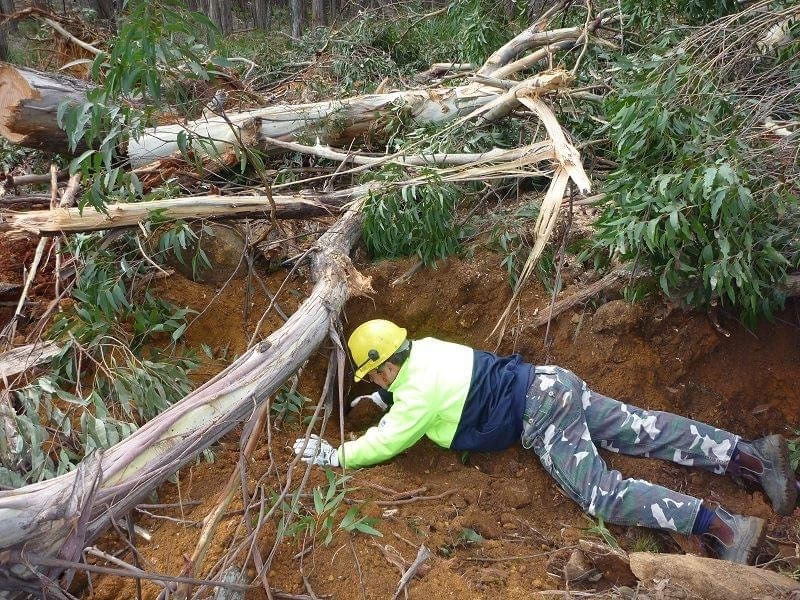
During Destruction
The logging began and burrows were decimated, bulldozed and flattened, large cut down trees were felled above the entrances to burrows, other entrances were blocked by debris, soil, logs and branches. A road was built above an active burrow; tonnes of cut down timber were piled up above another burrow.
As the logging finished each day, and on the weekends, we went out to clear debris dumped on burrow entrances, we dug out back filled burrows trying to re-open the entrances so the wombats could escape a horrendous slow death. With our GPS, shovels, picks, a crowbar and torches, we worked our way through the changing decimating depressing landscape.
Continue reading about During Destruction
We carefully recorded and photographed what we witnessed. A blog was developed, and social media posts were created with and ever-increasing audience.
As the logging finished each day, we went out to clear debris dumped on burrow entrances, we dug out back filled burrows trying to re-open the entrances so the wombats could escape a horrendous slow death.
There was no consideration for agreed haulage time, and we were never contacted or received any phone calls regarding injured animals. Eight weeks after the logging started in a specific section with a low number of burrows, we found an injured, (head/facial trauma) wombat who also had early clinical signs of mange. We found another deceased wombat under logging debris. Mange became widespread in the surviving wombats living at the edges of the logging zones. (Before logging started, we did not find one single wombat with mange). After the contractors finished a section, we followed up with mange treatment and “food drops” of hay in the remaining “saved” burrows.
Media, Parliament and Public Pressure
We documented the progress and shared via social media. It did not take long before petitions started and thousands of people from all over the world wrote letters to Politicians, Journalists, Wildlife Land Trust, Humane Society International, IFAW, RSPCA, NSW Wildlife Council, EPA, Forestry Corporation, etc…. Media releases were publised and the story of the Glenbog wombats were covered by most media agencies. From Sun-Herald, ABC, Canberra Times, News.com, Radio interviews, media agencies in the USA, UK, Japan and many other countries, as well as the local papers.
Senator David Shoebridge, Senator Janet Rice and Senator Lee Rhiannon raised it in Parliament and questioned Primary Industries Minister The Hon. Katrina Hodgkinson regarding the NSW Forestry Corporation’s failure to comply with our agreement
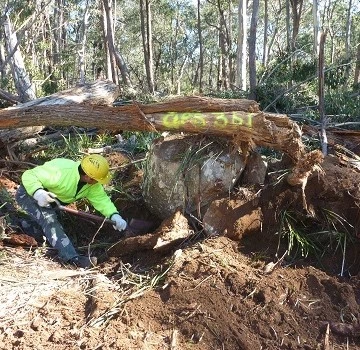
Quote from Senator Lee Rhiannon’s speech in Parliament.
As I mentioned, there is an international aspect to this matter. Some Japanese campaigners who came to the Glenbog State Forest were so deeply troubled by what they saw that the organisation The Japan Tropical Forest Action Network has also taken up this campaign, informing clients of Nippon Paper of the devastating consequences for wombats from the logging and wood chipping of its subsidiary South East Fibre Exports. The disastrous impact on the wombat population in Glenbog State Forest could be solved quite easily by ending the logging of our native forests.”
Continue reading about Media
Through social media, it did not take long before petitions started and thousands of people from all over the world wrote letters to Politicians, Journalists, Wildlife Land Trust, Humane Society International, IFAW, RSPCA, NSW Wildlife Council, EPA, Forestry Corporation, etc…. Media releases were published and the story of the Glenbog wombats were covered by most media agencies. From Sun-Herald, ABC, Canberra Times, News.com, Radio interviews, media agencies in the USA, UK, Japan and many other countries, as well as the local papers.
Wombats buried alive by logging company, Sydney Morning Herald
Wombat deaths: Government investigates “What went wrong”, Sydney Morning Herald
Baird government sacrifices wombats in quest for wood chips, Independent Australia
Glenbog State Forest logging hugely negligent to wildlife, Can do better
You Tube clips by Senator David Shoebridge visiting the Glenbog SF
Wombats buried alive in logging for woodchips in NSW, Australia You tube by Bronte Somerset
We had visits from Mr David Shoebridge MLC, Senator Lee Rhiannon and Senator Janet Rice, campaigners from Japan, members of SERCA (South East Regional Conservation Alliance) and many others who we guided through the forest for a first-hand vision of the tragedy.
Continue reading about In Parliament
The below questions, were asked in Parliament Legislative Council by Mr David Shoebridge MLC to Primary Industries Minister The Hon. Katrina Hodgkinson regarding the NSW Forestry Corporation’s failure to comply with our agreement.
BUDGET ESTIMATES 2014-2015
General Purpose Standing Committee No. 5
PRIMARY INDUSTRIES
Monday 18 August 2014
QUESTIONS ON NOTICE
Glenbog wombats
12. What action will be taken against the contractor for damage to wombat burrow?
ANSWER
The Forestry Corporation of NSW is investigating the incident. The appropriate action will be determined once this investigation has concluded.
13. What steps have been taken to ensure this does not happen again?
ANSWER
The investigation will look at opportunities for continuous improvement. Appropriate actions will be determined once the investigation has concluded.
14. Given the existence of voluntary measures and a claimed 2,000 prescriptions were not sufficient to protect these burrows, what changes is the Minister proposing to make to the regulations?
ANSWER
Forestry activities are regulated by the Integrated Forestry Operations Approvals (IFOAs), which contain appropriate measures for protecting wildlife across the landscape. The Forestry Corporation of NSW is committed to continuously improving its operations to minimise any environmental impact as a result of harvest operations.
15. Will any action be action against the contractor for damage to wombat burrow?
ANSWER
The Forestry Corporation of NSW is investigating the incident. The appropriate action will be determined once the investigation has concluded.
16. Regarding the logging of Glenbog State Forest Compartments 2301, 11 and 21:
(a) What factors were responsible for the suspension of logging in the vicinity of Log Dump F in the week ending 15 August 2014?
(b) When did the Forestry Corporation become aware of these factors?
(c) Why were these factors not known or acted upon before the logging commenced?
(d) Which contractor was engaged to undertake the logging of Glenbog Cpts 2301, 11 and 21?
ANSWER
a) Allegations were published in the media relating to deliberate breaches of the harvest plan. Forestry Corporation of NSW is investigating the incident.
b) The allegations were published on Sunday 10 August 2014.
c) No allegations of deliberate breaches of the harvest plan were brought to the attention of the Forestry Corporation of NSW before harvesting commenced.
d) The Forestry Corporation of NSW’s contracts relating to timber harvesting in Glenbog State Forest are with Blue Ridge Hardwoods and South East Fibre Exports. Harvesting contractors are engaged by these companies directly.
17. Will the principle of avoiding logging in the vicinity of wombat burrows be applied in future logging operations?
(a) If so, will this be done on a case by case basis or will a requirement be incorporated into the IFOAs.
(b) If not, why not?
ANSWER
NO.
a) N/A
b) The harvest plan instruction in Glenbog State Forest was to avoid damage to wombat burrows as far as practicable, not to avoid harvesting in the vicinity. The Forestry Corporation of NSW’s ecologists make an assessment of the appropriate environmental prescriptions to apply within the framework of the IFOA and other related legislation when planning each compartment
Part of David Shoebridge’s speech in Parliament:
“Yesterday morning I visited Glenbog State Forest in the south of New South Wales to join local wildlife carers and forestry protectors to examine the impact of recent logging operations on the forest and in particular on the wombats which make that forest their home. Glenbog State Forest is located between Nimmitabel and Bemboka just off the Snowy Mountains Highway. While there I met with Marie and Ray Wynan from Wildlife Rescue Far South Coast [WRSC]. Marie and Ray run their wildlife rescue operation from their property next to Glenbog State Forest. They were directly involved in recording the location of wombat burrows in the forest before logging operations commenced earlier this year……………………..
I conclude by thanking Marie and Ray for taking me around Glenbog and for introducing me to the rescued wombats and joeys currently in their care. Anyone who has seen Marie nursing Willow, a 10-kilogram injured wombat, on her knee while feeding him a bottle could not help but want to support this work. I also thank Harriet Swift, John Perkins and all the wonderful forest protectors who are part of the South East Region Conservation Alliance Inc. for their continued work in our forests. I have nothing but admiration for the selfless volunteers and activists who work to protect animals and the native forests in which they live. As a Parliament we should do everything we can to support them in this work.”
And more from Mr David Shoebridge in the Parliament:
When the Minister and the bureaucrats were pressed on what “disturbed” meant this was the evidence:
Mr DAVID SHOEBRIDGE: When it said a number of burrows had been disturbed, what did that mean? Does that mean buried?
Ms KATRINA HODGKINSON: It means disturbed.
Mr DAVID SHOEBRIDGE: I am asking you what that means. I am asking you if it means buried covered over so that wombats are buried
Mr HANSEN (Director General, Department of Primary Industries): It can be a range of issues disturbing the burrows: whether it has been covered with fallen debris, whether it has been covered with soil or whether there is compaction—
Mr DAVID SHOEBRIDGE: Basically, though, the wombat cannot get out. Is that right? That is what it means; that is a summary of it?
Mr HANSEN: Yes, that the access has been impeded in one way or another. The information we have is that of the 150 burrows that have been marked, it is alleged that 11 have been disturbed, and that is what is currently under investigation.
Mr DAVID SHOEBRIDGE: How did it happen, Mr Hansen, through you, Minister, that despite them being given the GPS coordinates, 11 of them were, to use the euphemism that you apply, disturbed?
Ms KATRINA HODGKINSON: I would say that the word “disturbed” is the appropriate word at this point in time and Forestry Corporation—
Mr DAVID SHOEBRIDGE: I do not mean to debate the word; I just want to know how it happened.
Ms KATRINA HODGKINSON: —is continuing its investigations …”.
Continue reading about Public Pressure
Due to public outrage, pressure from media and EPA, an internal investigation commenced, and logging was temporarily ceased. We had several meetings with both EPA and Forestry Corporation but as the logging continued, burrows were destroyed deliberately, our markers ripped and destroyed, and the logging halted a second time.
More meetings and negotiation and the Forestry agreed to move dump points to areas free of burrows, move a road going around a burrow instead of over it. They agreed to exclude the large section we asked for in the beginning as it is near sphagnum bogs and have many wombat burrows. They bulldozed a certain tree away from a burrow instead of towards the burrow. Many burrows were eventually saved from destruction. On the 1st of September, they left earlier than planned, again saving more burrows, and saving more forest.
The loggers were gone, so was the pristine forest. The area was now covered in debris, the forest floor was mud and bare ground with no grazing area left. An eerie silence and the absence of animals and birds were so depressing. We continued mange treatment and food drops in the saved burrows and in the outskirts of the logging zones for many months.
A few decent human beings, a Planner, a Regional Manager, and a spokesperson within NSW Forestry Corporation could eventually see and understand our plight to save the wombats from being buried alive and joeys being separated from their mothers. A much better relationship started to develop and together we developed the “Glenbog Guidelines”. A set of guidelines of how and what to do when burrows are within dump points and roadsides.
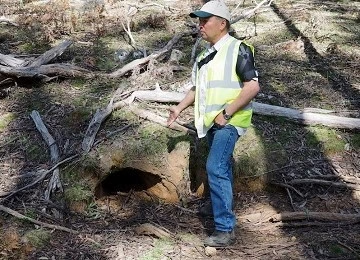
Saving lives, Glenbog Guidelines and Education
Due to public outrage, pressure from media and EPA, an internal investigation and logging was temporarily ceased. We had several meetings with both EPA and Forestry Corporation leading to Jarake Wildlife Sanctuary providing wombat behaviour training days to the Forestry’s plant operators, planners, ecologists, managers and contractors and to discuss how and why to better protect burrows during logging.
Together we developed the Glenbog Guidelines that has since been used in all Northern sections of Glenbog State Forest, Mogo State Forest and Corunna State Forest. The guidelines have also been successfully used in other land clearing areas such as the Lake Wallace project. We urge people to download the document, take to Councils, Developers, Forestry whenever land clearing is being planned.
Before Logging
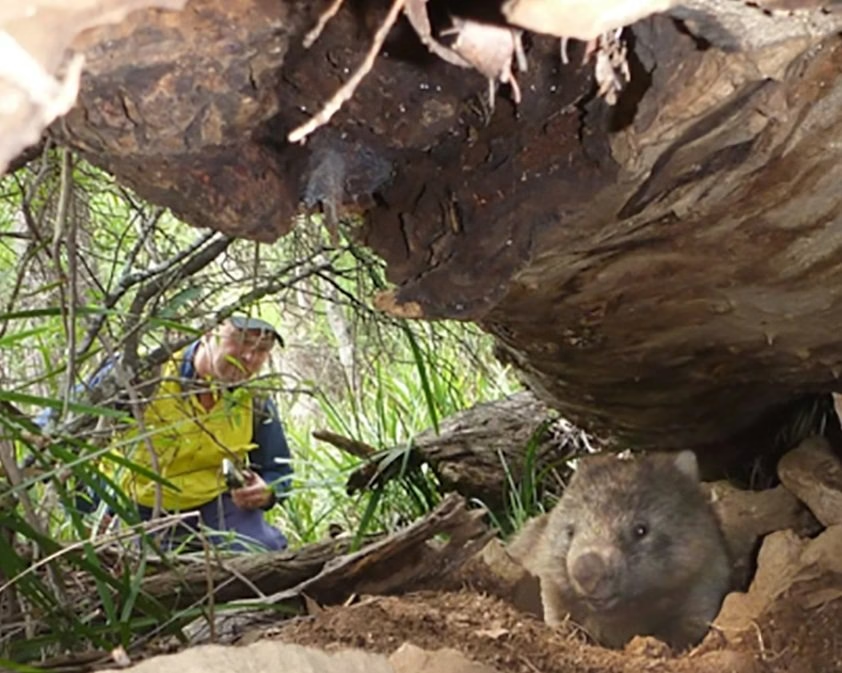
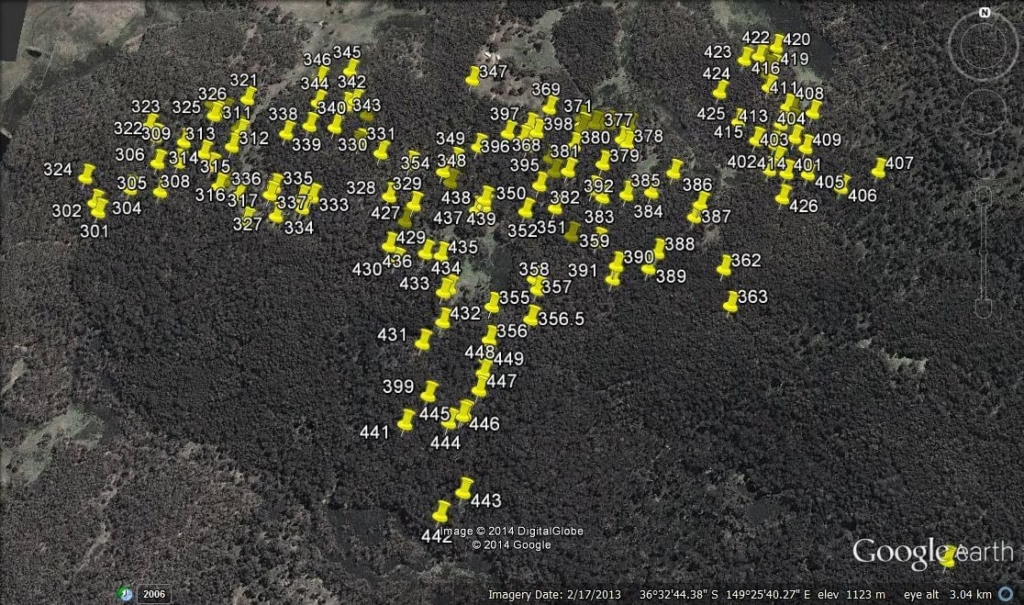
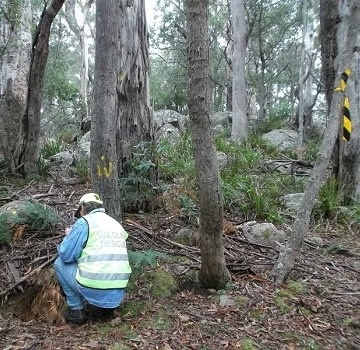
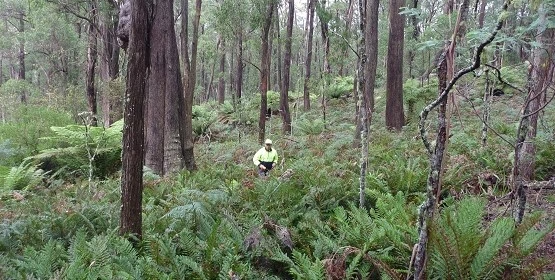
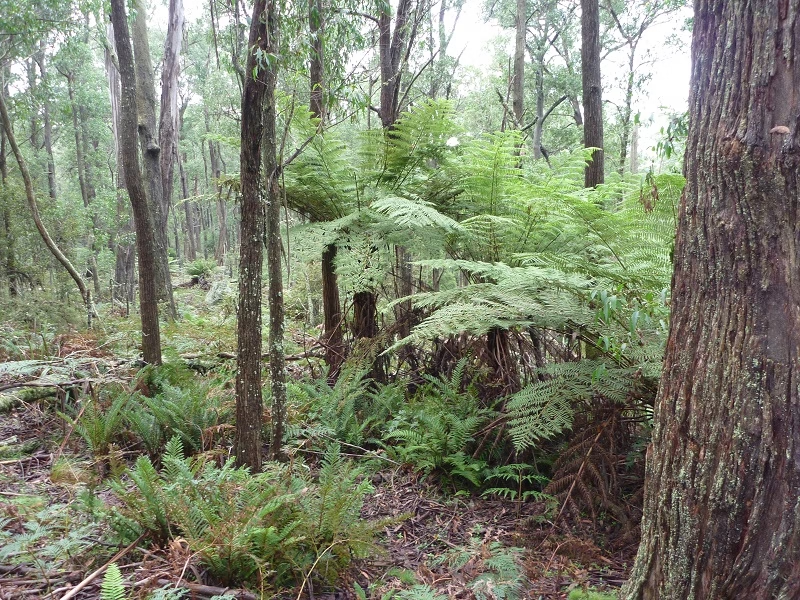
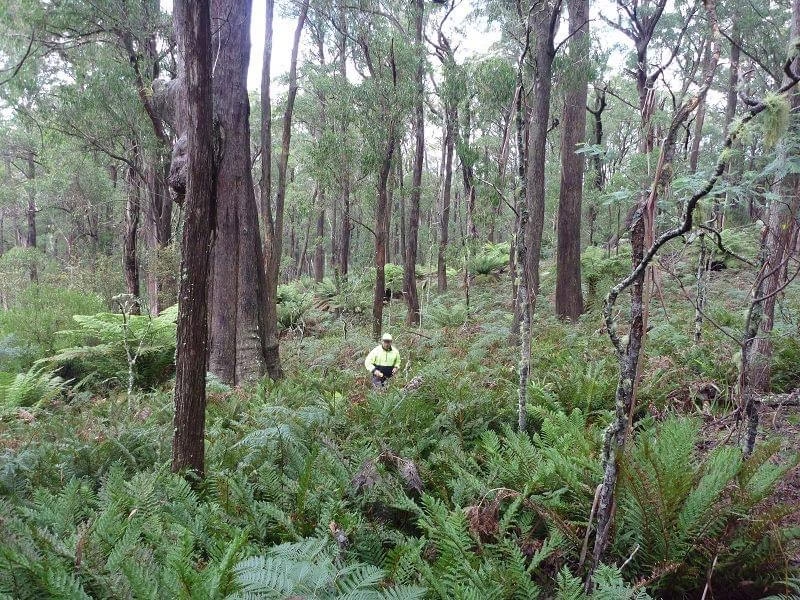
During Destruction
